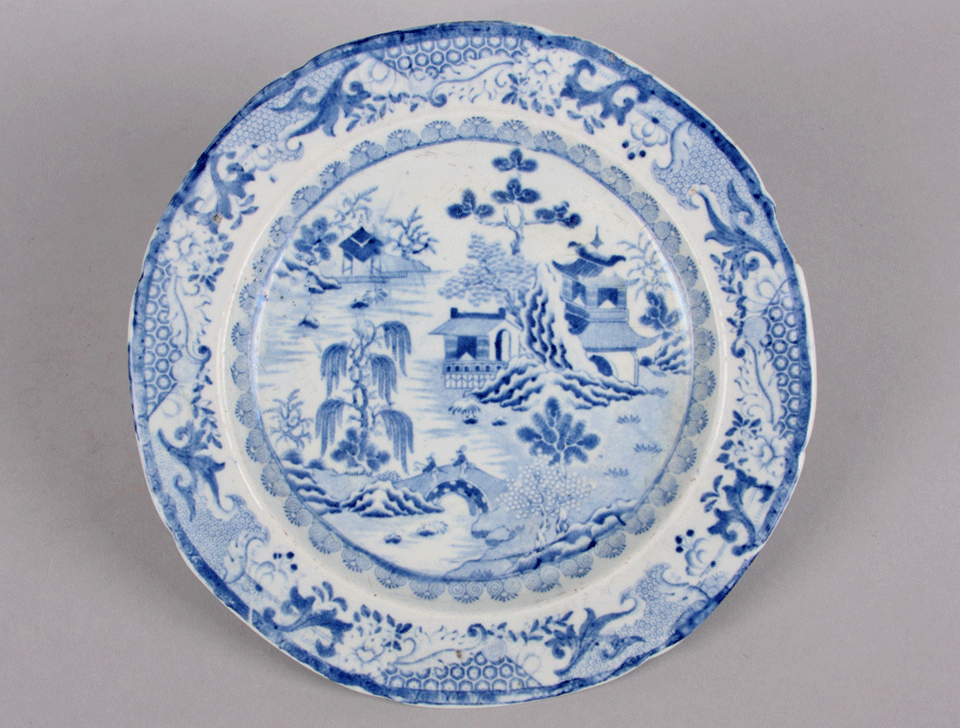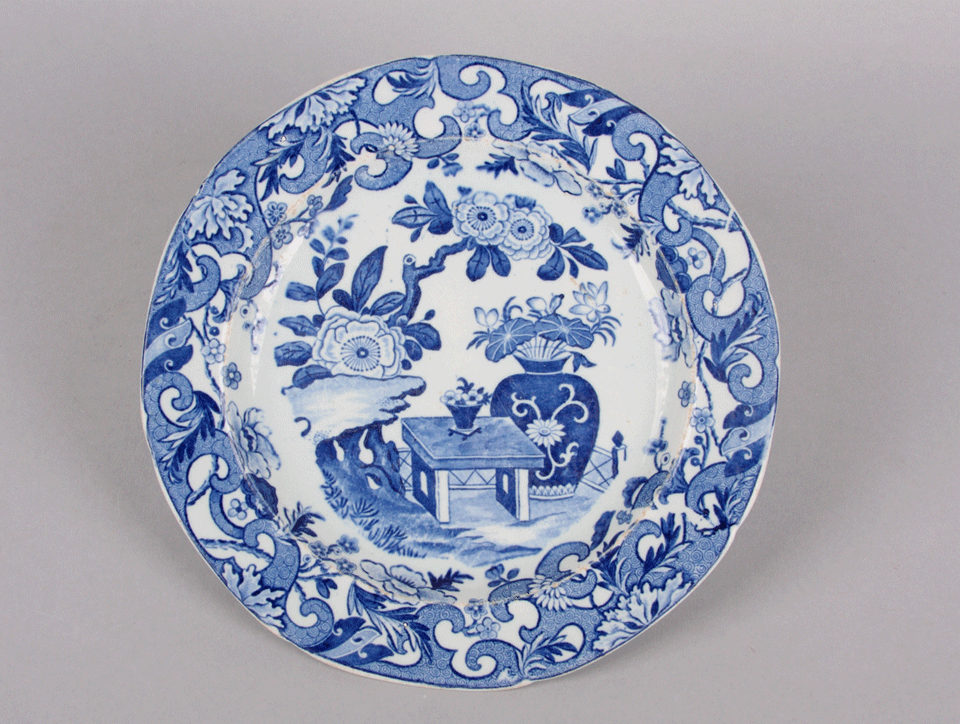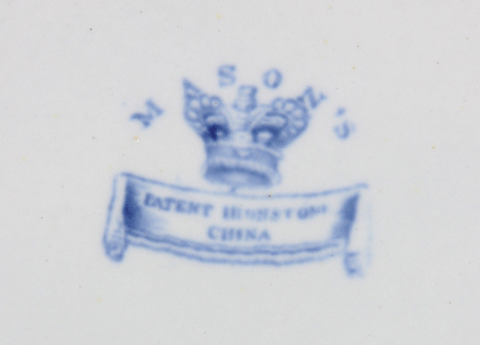
2012.91.147, Mason's patent ironstone plate, England, ca. 1830.
Eason Eige collection; photo by B. Bernard

2012.91.147, Mason's patent ironstone plate, England, ca. 1830.
Eason Eige collection; photo by B. Bernard
In 1813, Charles James Mason patented a white-bodied, chip-resistant earthenware that resembles porcelain. Mason's "Ironstone" was first mass-produced in Staffordshire; from there production spread to other parts of England and to other countries. As that happened, Mason's name for his product became a generic name. Today it's common to refer to any hard, white-bodied earthenware as ironstone. The tough, fairly thick white plates widely in restaurants are ironstone, for example (they are also referred to as hotel ware).
As the plate at the top of this page shows, most early ironstone
tried to look Chinese. It differed from the originals in having
mass-produced "painted" designs created with decals—which could be
printed in bulk before being applied to the piece. In time, ironstone patterns
drifted away from strict imitations of Chinese pieces. The example below
is derived from Chinese designs but is not as blatantly "Chinese"
as the example shown above.

2012.91.149, Mason's patent ironstone plate, England, ca. 1830.
Eason Eige collection; photo by B. Bernard
The photo below shows the maker's mark on the back of the first plate. This
mark was also produced using a decal. The word "China" does not refer to the
country of origin (which was England), but serves as a reminder of who was
imitating whom.

2012.91.147, Mason's mark on the back of the plate.
Photo by B. Bernard
See source code for photo credits and copyright information. Page last revised on January 27, 2015. Please report problems to toh@unm.edu